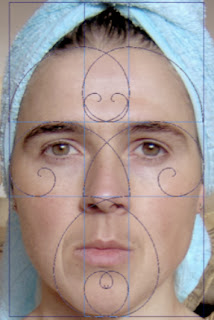Let's begin with a shape with which we are all familiar. It is the spiral commonly seen in shells. By taking a careful look at that spiral (the chambered nautilus is probably the clearest example) you will observe that as it gets larger, it retains its identical form. Since the body of the organism grows in the path of a spiral that is equiangular and logarithmic, its form never changes. The beauty of this form is commonly called the "golden spiral."
This spiral is visible in things as diverse as: hurricanes, spiral seeds, the cochlea of the human ear, ram's horn, sea-horse tail, growing fern leaves, DNA molecule, waves breaking on the beach, tornados, galaxies, the tail of a comet as it winds around the sun, whirlpools, seed patterns of sunflowers, daisies, dandelions, and in the construction of the ears of most mammals.
This spiral follows a precise mathematical pattern. We will first look at this spiral in sunflowers. By
looking carefully at a sunflower you will observe two sets of spirals (rows of seeds or florets) spiraling in opposite directions. When these spiral rows are counted in each direction, you will discover that in the overwhelming majority of the cases that their numbers, depending upon the size of the flower, will be of the following ratio:
if small, 34 and 55; if medium 55 and 89; if large 89 and 144
These numbers are part of the Fibonacci numbering sequence, a pattern discovered around A.D. 1200
by Leonardo Pisa (historically known as Fibonacci). Each succeeding number is the sum of the two preceding numbers. The sequence of these numbers is 1,2,3,5,8,13,21,34,55,89,144,233, ad infinitum. This numbering pattern reveals itself in various ways throughout all of nature...
Why did Phideas, the Greek sculptor, and others in ancient Greece and Egypt often use this ratio in designing many of their works of art? Because this ratio has been found to be remarkably pleasing to the human eye, it produces what is called a Golden Rectangle. If the short side of the rectangle is 1, the long side will be 1.618.
Another area of great interest is the occurrence of Fibonacci numbers in the spiral arrangement of leaves around a plant's stem (called phyllotaxis). This spiral pattern is observed by viewing the stem from directly above, and noting the arc of the stem form one leaf base to the next, and the fraction of the stem circumference which is inscribed. In each case the numbers are Fibonacci numbers. Examples: In an elm the arc is 1/2 the circumference; in beech and hazel, 1/3; apricot, oak, 2/5; in pear and poplar, 3/8; in almond, 5/13; and in some pines either 5/21 or 13/34. Why did God arrange them this way? This pattern assures that each leaf will receive its maximum exposure to sunlight and air without shading or crowding other leaves.
When we realize that the information to produce these spirals and numbers in living things is stored in the DNA, should we then be surprised to find that the DNA molecule is 21 angstroms in width and the length of one full turn in its spiral is 34 angstroms, both Fibonacci numbers? The DNA molecule is literally one long stack of golden rectangles.
Let's look into the area of very small and very large things. In the world of atoms there are four fundamental asymmetries-
1- structure of atomic nuclei,
2- distribution of fission fragments,
3- distribution of numbers of isotopes,
4- and the distribution of emitted particles,
and it is significant that "the numerical values of all of these asymmetries are equal approximately to the `golden ratio,' and that the number forming these values are sometimes Fibonacci or `near' Fibonacci numbers." In changing states of a quantity of hydrogen atoms, as the atoms gain and lose radiant energy at succeeding energy levels, the changing proportion of the histories of the atomic electrons form Fibonacci numbers.
In the area of very large phenomena when the time period of each planet's revolution around the sun is compared in round numbers to the one adjacent to it, their fractions are Fibonacci numbers! Beginning with Neptune and moving inward toward the sun, the ratios are 1/2, 1/3, 2/5, 3/8, 5/13, 8/21, 13/34. These are the same as the spiral arrangement of leaves on plants!
A most interesting divergence in the chart is that of the Earth. As the next planet in the series after Mars, its number should be 8:21, but it isn't. This number "skips" over Earth and connects to Venus. Even with this divergence we find that the Earth's period compared to Mars and Venus are Fibonacci numbers (8/13, 13/21). It is my opinion that this anomaly is evidence of God's showing the uniqueness of planet Earth in relationship to the whole cosmos. It also accomplishes another fact, for this "anomaly" shatters the big bang and nebular hypothesis, for if all the planets formed from a whirling cloud of dust and atoms, this feature would not be present. To think that the times of revolution of the planets around the sun correlates with the arrangement of leaves around stems on plants is also an amazing phenomena." ICR
Thou art worthy, O Lord, to receive glory and honour and power:
for thou hast created all things,
and for thy pleasure they are and were created.
 |
| http://www.icr.org/ |










